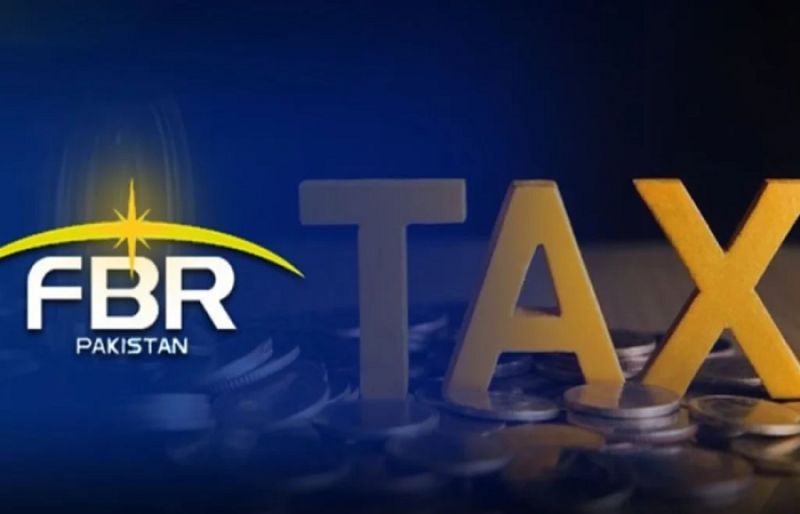Business
Peloton revamps equipment, launches commercial unit and raises prices ahead of holidays

Peloton on Wednesday said it’s relaunching its product assortment, introducing a commercial equipment line and raising prices for both subscriptions and hardware as the company looks to reignite growth ahead of the holiday shopping season.
The revamped assortment includes better audio, processors and WiFi across all of its machines. Its refreshed plus line will feature an AI-powered tracking camera, speakers, a 360-degree swivel screen and hands free control, among other new features.
“The products are called the cross training series because we’re trying to help our members … understand that the right regimen for everyone, right routine for everyone is a mix of cardio and strength, and also investing in practices like yoga and meditation,” CEO Peter Stern told CNBC in an interview. “And so the products were designed, regardless of which one you buy, to facilitate that type of multi-disciplinary approach to wellness.”
The entrance to the Peloton offices in Midtown Manhattan.
Erik Mcgregor | Lightrocket | Getty Images
The assortment-wide relaunch, the first since the company’s founding, comes as Peloton looks to return to sales growth after spending the last couple of years fixing its cost structure and staving off financial ruin. Now that the company has refinanced its debt and is again generating free cash flow, it is now focusing on its assortment in the hopes a better line up can bring in a wider swath of members.
“The products are going to be more expensive than the ones that we had before, but I think deliver a lot more value because now you’re getting a strength and a cardio solution,” said Stern. “Our holiday season is about to be upon us. We sell over 60% of the units across the whole year [during the holidays]… we’ll get a pretty clear sense of whether we’re hitting the mark in the next few months based on new people that we attract with this cool new stuff, and how we impact the behavior of existing members.”
Fitness junkies are increasingly prioritizing a combination of cardio and strength in their routines. That can be difficult with some of Peloton’s original machines because the screen doesn’t move and it can be clunky to switch between different types of classes.
Peloton’s rep tracking feature.
Courtesy: Peloton
Nick Caldwell, Peloton’s chief product officer, said the revamped assortment seeks to address those issues and other common complaints with the original lineup.
“We’ve integrated our largest swivel screen across the entire plus line, 360 degrees of movement. It’s built for seamless transition from your cardio to different workout types. You can step off the Bike, Tread or Row, turn the screen, and you’ve got a front row view for strength, yoga, stretch or mobility work,” said Caldwell during a presentation at Peloton’s New York City studio. “We’ve also added voice control. You can adjust weight, skip moves, pause all with your voice, no more fumbling around with buttons while you’re trying to enjoy your workout.”
Those improvements will come with a higher price tag, which is welcome news to some on Wall Street that have said Peloton has taken too long to adjust its pricing. Most of its hardware will go up in price by a couple hundred dollars each, and its membership costs will rise, too. Peloton’s all-access membership will increase from $44 to $49.99 per month, its App+ will increase from $24 to $28.99 a month and its App One will rise from $12.99 to $15.99 per month.
Here’s how much its hardware prices will increase:
- Bike: $1,695, up from $1,145 for refurbished or $1,495 new
- Bike+: $2,695, up from $2,495
- Tread: $3,295, up from $2,995
- Tread+: $6,695, up from $5,995
Peloton’s original Row, priced at $3,295, will be replaced with its new Row+, which will cost $3,495.
Peloton’s priorities have evolved in the last few years. Its machines have faced product safety issues and have long dragged on Peloton’s profitability because they’re expensive to make and a limited number of consumers are willing to buy them. Under former CEO Barry McCarthy, a former Spotify and Netflix executive, the company shifted focus away from its products and instead tried to build a business around its app, which failed to bring the growth management wanted.
Now, Stern, who co-founded Apple Fitness+ and previously oversaw Ford‘s subscription services, aims to upgrade Peloton’s products in an effort to match its wide range of class types with its hardware.
Betting big on business
Beyond revamping its direct-to-consumer business, Peloton is also unveiling a new commercial equipment line of more durable versions of its existing hardware.
The Peloton Pro Series includes commercial versions of its Bike+, Tread+ and Row+ and will be marketed to places that have small gyms, like hotels, apartment buildings, corporate wellness centers and country clubs.
In recent years, Peloton has tried a few different strategies to build out the commercial side of its business through partnerships with hotels and universities. It’s now one of the faster growing parts of the business, said Dion Camp Sanders, Peloton’s chief commercial officer.
Still, some industry critics have said Peloton’s equipment isn’t appropriate for gym settings because the machines can’t handle higher frequency use, which prompted the company to create a more durable lineup. It also recently created a new commercial business unit, which combines Peloton’s offering with Precor, the fitness equipment company it acquired in 2020.
“That enables us to offer a pretty broad assortment of commercial fitness equipment and serve a broad set of … needs, both heavy use environments as well as lighter use environments,” said Camp Sanders. “We feel like it’s a pretty unique offering because we’re able to bring the best of Peloton’s aspirational experience across software and content … as well as the reliability, durability, quality that you get with Precor and Precor’s capabilities around service and repair.”
While revenue across Peloton was down in its most recent fiscal quarter, its commercial business unit has already returned to year-over-year growth and is expected to make up a larger percentage of total revenue over time, said Camp Sanders. It’s also a crucial marketing tool for the company, he added.
“Peloton equipment in hospitality settings are the most productive source of trial and lead generation for our consumer business. So a consumer may first encounter a Peloton in a premium hotel, take a ride, fall in love with the experience, and then they come into our system,” said Camp Sanders.
“Once we start to put Pelotons in more and more commercial environments, we believe it can become a great, almost tip of the spear way to introduce consumers to the Peloton brand in more and more places, and then that can help us pull the consumer business along.”
Clarification: This article was updated to include the previous pricing for both refurbished and new Bikes.
Business
Budget 2026: Market Leaders Urge Govt To Reduce STT; What’s This, How Does It Impact Investors?

Last Updated:
Budget 2026: Market participants urge Finance Minister Nirmala Sitharaman to reduce the securities transaction tax (STT), especially on cash market transactions.
The Securities Transaction Tax (STT) is a tax levied on the purchase and sale of securities on recognised stock exchanges. (Photo Credit: Freepik)
Finance Minister Nirmala Sitharaman on Tuesday chaired the fourth pre-Budget consultation with the stakeholders from the capital markets to discuss the next Union Budget 2026-27. According to CNBC-TV18 citing sources, market participants urged the government to reduce the securities transaction tax (STT), especially on cash market transactions.
The industry also pushed for reforms in the buyback taxation, calling for the levy to apply only on the profit component of a buyback instead of the entire amount, according to the report. Steps to boost retail participation in the equities markets were also discussed, along with a proposal to raise retail ownership from the current 5% to 8% over time.
Union Minister for Finance & Corporate Affairs Smt. @nsitharaman chairs the fourth Pre-Budget Consultation with the stakeholders from the capital markets in connection with the forthcoming Union Budget 2026-27, in New Delhi, today.The meeting was also attended by Union… pic.twitter.com/RT5LmWZMrI
— Ministry of Finance (@FinMinIndia) November 18, 2025
What’s STT, And How Does It Impact Investors?
The Securities Transaction Tax (STT) is a tax levied on the purchase and sale of securities on recognised stock exchanges. Introduced in 2004, it applies to equity shares, derivatives, equity-oriented mutual fund units, and ETFs. The tax is collected upfront by the exchange and passed on to the government, making compliance automatic and eliminating the need for separate filing.
Current STT Rates, How STT Works
The rate of STT differs depending on the type of transaction:
- For equity delivery trades, STT is charged on both buy and sell sides.
- For intraday and derivatives, it is typically levied only on the sell side.
- Options attract STT on premium, while futures attract it on the contract value.
Because the tax is charged on every trade, the impact compounds for frequent traders and high-volume participants such as proprietary desks, HNIs, and institutions.
As of now, STT on cash-market delivery trades is 0.1 per cent on both the buy and sell side, which is Rs 100 per Rs 1 lakh of trade value when you buy, and another Rs 100 per Rs 1 lakh when you sell. Intraday equity trades attract STT of 0.025 per cent (Rs 25 per Rs 1 lakh) on the sell leg only. In the derivatives segment, the tax is 0.02 per cent on the sale value of equity futures (Rs 20 per Rs 1 lakh) and 0.1 per cent of the option premium on the sale of equity options; if an option is exercised, a separate STT is levied on the intrinsic value at settlement.
How Can Lower STT Benefit Investors?
STT directly raises the cost of trading. Even a small reduction benefits:
- Retail traders, by increasing net return on intraday and F&O trades.
- Derivatives markets, where margins are already tight and volumes are high.
- Liquidity, as lower trading costs can encourage participation.
In the run-up to Budget 2026, this has become a key demand from market leaders looking to keep transaction costs competitive.

Haris is Deputy News Editor (Business) at news18.com. He writes on various issues related to personal finance, markets, economy and companies. Having over a decade of experience in financial journalism, Haris h…Read More
Haris is Deputy News Editor (Business) at news18.com. He writes on various issues related to personal finance, markets, economy and companies. Having over a decade of experience in financial journalism, Haris h… Read More
November 18, 2025, 17:54 IST
Read More
Business
Home Depot cuts earnings outlook as home improvement demand falls short of expectations

Home Depot on Tuesday cut its full-year profit forecast and missed Wall Street’s earnings expectations for the third straight quarter as it saw weaker home improvement demand, tepid consumer spending and lower than usual storm activity.
The retailer said it now expects full-year sales will climb about 3% and comparable sales, which take out the impact of one-time factors like store openings and calendar differences, to be slightly positive. That compares to its previous expectations for full-year sales to grow by 2.8% and comparable sales to increase by 1%.
The revised outlook includes an estimated $2 billion in incremental revenue from GMS, a building-products distributor that Home Depot acquired earlier this year. The company’s sales were not part of its previous full-year guidance.
Home Depot expects full-year adjusted earnings per share to decline by about 5% from the year-ago period, compared to its prior expectations that they would fall by about 2%
In a CNBC interview, Chief Financial Officer Richard McPhail said the retailer previously expected home improvement activity would increase. It also anticipated higher sales of roofing materials, generators and other supplies that typically sell before and after seasonal storms.
Neither dynamic materialized, he said, putting pressure on the business.
“When we set guidance, we had anticipated that demand would begin to accelerate gradually in the back half of the year as interest rates and mortgage rates eased,” he said. “But what we saw was that ongoing consumer uncertainty and continued pressure in housing are disproportionately impacting home improvement demand.”
Here’s what Home Depot reported for the fiscal third quarter compared with Wall Street’s estimates, according to a survey of analysts by LSEG:
- Earnings per share: $3.74 adjusted vs. $3.84 expected
- Revenue: $41.35 billion vs. $41.11 billion expected
Home Depot’s stock dropped about 2% in premarket trading Tuesday. As of Monday’s close, the company’s shares are down about 8% so far this year. That trails the S&P 500’s 13% gains during the same period.
For Home Depot, housing turnover typically sparks larger and more lucrative projects as customers fix up their homes before or after moving. Those big projects, however, have dropped in frequency as higher interest rates have led to steeper mortgage rates and borrowing costs for loans, which a homeowner may use to pay for a kitchen remodel or major addition.
Since roughly the middle of 2023, McPhail has told CNBC that homeowners have been in a “deferral mindset.” That’s led to a bit of a waiting game for Home Depot, as it awaits either lower mortgage rates or a shift by consumers who get used to higher mortgage rates as the new normal.
In the most recent three-month period, that waiting game continued. McPhail told CNBC that demand was “stable” from the fiscal second quarter to the third quarter when adjusting for the lack of hurricanes.
But, he added, “at this point, it’s hard to identify near-term catalysts that would lead to acceleration.”
Home Depot’s net income for the three-month period that ended Nov. 2 dropped to $3.60 billion, or $3.62 per share, from $3.65 billion, or $3.67 per share, in the year-ago quarter. Revenue decreased from $40.22 billion in the year-ago quarter.
Average ticket, the typical amount spent by customers at the store or on the company’s website, rose 1.8% year over year in the quarter. However, customer transactions fell 1.6% year over year.
A bright spot in the quarter was online sales, which rose by 11% year over year, McPhail said.
Compared to other big-box retailers, Home Depot’s customers tend to be more financially stable. About 90% of its do-it-yourself customers own their homes and the home professionals who shop at the retailer tend to get hired by homeowners.
Even so, McPhail said Home Depot’s weaker outlook came in part because shoppers across income groups are reluctant to take on high-dollar projects. He said a slower housing market and the higher cost of borrowing has contributed to the trend.
He said other factors may also be having a chilling effect, including the prolonged government shutdown, an uptick in corporate layoff announcements and a decline in home values in some markets.
As do-it-yourself customers postpone bigger projects, the company has tried to attract more business from contractors, roofers and other professionals.
The company has made two key purchases of pro-related companies. Last year, it bought Texas-based SRS Distribution for $18.25 billion — the largest acquisition in its history. The company sells supplies to professionals in the landscaping, pool and roofing businesses. Earlier this year, Home Depot announced it was buying GMS.
Like other retailers, Home Depot has felt the pinch of higher costs on some imported items because of tariffs. McPhail said in May that the company was diversifying the countries where it sourced its goods and intended to “generally maintain our current pricing levels across our portfolio.”
However, company leaders warned in August that it may have to hike prices in some categories because of higher tariffs.
McPhail told CNBC that Home Depot has increased some items’ prices, but said “where there were price actions, they were modest.”
He said Home Depot has kept prices the same for some key items or even been able to reduce them. For example, he said, its best-selling seven-and-a-half foot Grand Duchess Christmas tree and many of its strings of lights for trees have dropped in price.
Business
FBR begins surveillance of 21 beverage plants to tackle tax evasion – SUCH TV

The Federal Board of Revenue (FBR) has begun monitoring 21 beverage manufacturing units as part of its efforts to curb tax evasion. According to officials, the FBR has instructed Inland Revenue teams to keep a close eye on the sales records of these beverage-producing companies.
The monitoring drive has initially been launched in Lahore and other regions where major food and beverage production facilities are located.
These teams will review sales data for mineral water, dairy products, milk chocolates, energy drinks, and various other items.
FBR has empowered these teams under Section 40-B of the Sales Tax Act, enabling them to oversee sales, purchases, and stock levels of the manufacturing units.
The monitoring will be conducted daily to detect tax evasion.
These teams will also maintain daily data on sales and purchases of these manufacturing units.
-

 Tech1 week ago
Tech1 week agoFrom waste to asset: Turning ethanol production CO₂ into jet fuel
-

 Tech3 days ago
Tech3 days agoNew carbon capture method uses water and pressure to remove CO₂ from emissions at half current costs
-

 Politics4 days ago
Politics4 days agoBritish-Pakistani honoured for transforming UK halal meat industry
-

 Sports3 days ago
Sports3 days agoTexas A&M officer scolds South Carolina wide receiver after touchdown; department speaks out
-

 Business3 days ago
Business3 days agoThese 9 Common Money Mistakes Are Eating Your Income
-

 Tech1 week ago
Tech1 week agoSecurity flaws in portable genetic sequencers risk leaking private DNA data
-

 Fashion5 days ago
Fashion5 days agoAdidas & Patrick Mahomes expand NIL programme with Texas Tech athletes
-

 Business4 days ago
Business4 days agoWhat’s behind Rachel Reeves’s hokey cokey on income tax rises?






1724844288-0/BeFunky-collage]_______-(8)1724844288-0-640x480.webp)


